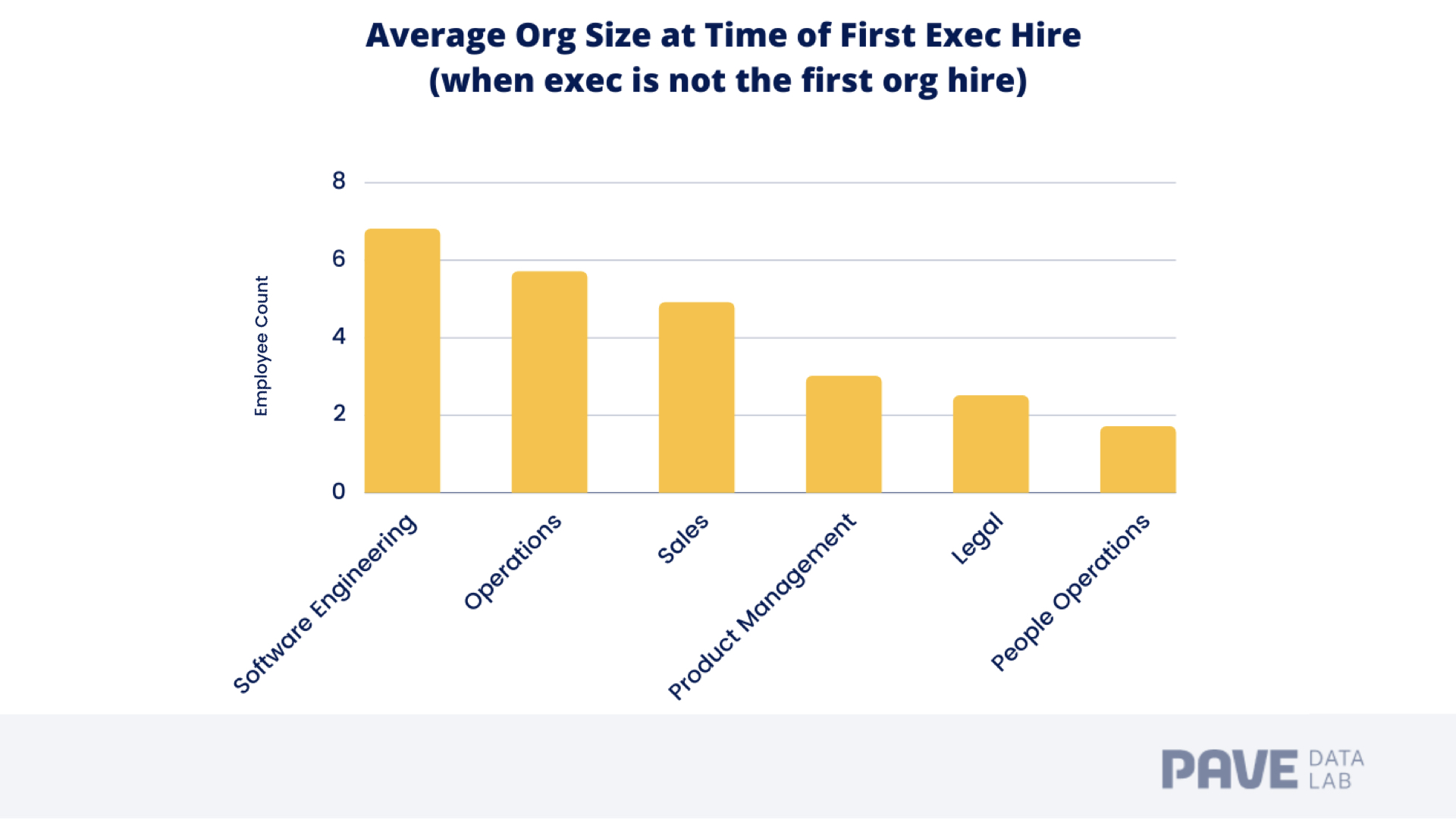For growing companies, creating senior leadership roles is serious business.
Many small firms work hard to recruit seasoned execs early on to better position the company against the many pitfalls of early stage growth.
But bringing in senior talent can mean handing away fat chunks of equity and, often, a coveted Board seat. With so much on the table, it can be a nightmare to part ways with the wrong hire at the wrong time.
So when is the right time to bring in a senior leader?
To find the answer, we took a look at what our compensation benchmarking data had to show about first executive hires across different orgs.
After CEOs, Engineering Execs are Typically the Next to Join
Whether a first exec is joining a company to lay the foundation for their function or stepping into an existing leadership void, our data shows that certain orgs tend to have their senior leaders in place sooner than others.
(This analysis excludes management execs—aka CEOs—because they are commonly part of the founding team.)
We looked at companies founded in 2015 or later and found that the Engineering orgs had the fastest time to first exec, at an average of just over 1 year.

Product orgs were most likely to get their first exec not long after the 2-year mark, while the first People Operations exec isn’t hired until after 3 years in, on average.
For this analysis, we defined an executive as a VP or C-suite level hire. We excluded execs with a Founder title, as well as those holding more than 10% of their company’s total equity, as they were assumed to be founders.
It is important to note that some execs may have had non-executive leveling at the time of joining their company, which cannot be accounted for in this analysis.
Nearly Three-Quarters of Engineering Execs are their Orgs First Hire
More often than not, our data shows that an org’s first exec is also its first hire. This is most true for the Legal team, where 80% of first execs are the first hire in the Legal department.
Among Engineering execs, 72% are the first hire for their team, on average.

Getting an exec established early has several benefits. In some orgs, like Legal, a company may not need more than one headcount for a long time. In that case, the solo attorney must be versatile, self-sufficient and, often, a subject matter expert—all skills that a company might be looking to lock down with an exec-level hire.
In other orgs, nabbing the perfect experienced hire—even with no headcount—can set up the team for a successful growth trajectory. A mix of temporary title inflation and the opportunity to build out their own team can be a great lure for rising leaders.
It is also important to note that early hires who churned from the company are not captured in this analysis.
For Orgs Who Wait to Hire Execs, Average Headcounts Remain in Single Digits
While there’s sometimes much to be gained by not committing to an exec before understanding the specific needs of the company, the right timing can be critical.
We looked at data from the minority of companies that bring in execs to take over an existing team in order to find the average headcounts of their orgs.
Among this group, Engineering teams were largest, averaging nearly seven employees at the time of exec hire. Sales teams—the least likely org to bring in an exec as its first hire—average just shy of five employees.

For fast-growing companies, the hunt for senior leadership can be more of an art than a science. The best founders know it takes more than a mountain of stellar resume lines to create a great leadership team.
As with any role, the right culture fit is worth waiting for.
So what does that mean for companies recruiting from the narrow talent pool of senior leaders?
Our data suggests: start hunting early and be prepared to make room at the top for the execs who see your vision, live your values, and share your ambitions.
The only data-driven blog powered by real-time HRIS & Equity integrations.



.jpg)



.jpg)